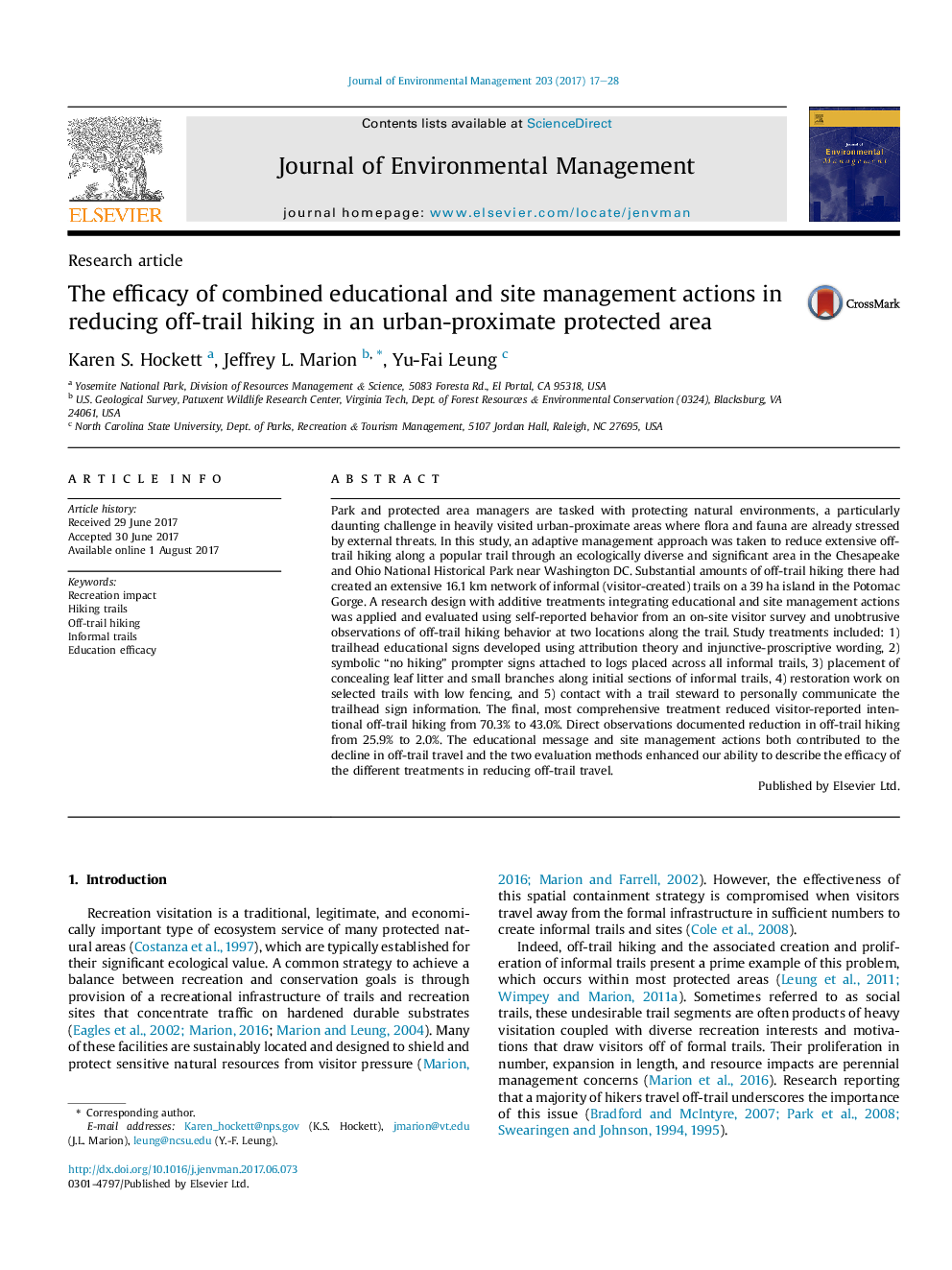| Article ID | Journal | Published Year | Pages | File Type |
|---|---|---|---|---|
| 5116487 | Journal of Environmental Management | 2017 | 12 Pages |
â¢We applied educational and site management treatments to reduce off-trail hiking.â¢Self-reported and observed behavior found these actions to be effective.â¢The best treatment reduced visitor-reported off-trail hiking from 70.3% to 43.0%.â¢Direct observations documented reduction in off-trail hiking from 25.9% to 2.0%.â¢Personal communication was the most effective treatment in reducing off-trail hiking.
Park and protected area managers are tasked with protecting natural environments, a particularly daunting challenge in heavily visited urban-proximate areas where flora and fauna are already stressed by external threats. In this study, an adaptive management approach was taken to reduce extensive off-trail hiking along a popular trail through an ecologically diverse and significant area in the Chesapeake and Ohio National Historical Park near Washington DC. Substantial amounts of off-trail hiking there had created an extensive 16.1Â km network of informal (visitor-created) trails on a 39Â ha island in the Potomac Gorge. A research design with additive treatments integrating educational and site management actions was applied and evaluated using self-reported behavior from an on-site visitor survey and unobtrusive observations of off-trail hiking behavior at two locations along the trail. Study treatments included: 1) trailhead educational signs developed using attribution theory and injunctive-proscriptive wording, 2) symbolic “no hiking” prompter signs attached to logs placed across all informal trails, 3) placement of concealing leaf litter and small branches along initial sections of informal trails, 4) restoration work on selected trails with low fencing, and 5) contact with a trail steward to personally communicate the trailhead sign information. The final, most comprehensive treatment reduced visitor-reported intentional off-trail hiking from 70.3% to 43.0%. Direct observations documented reduction in off-trail hiking from 25.9% to 2.0%. The educational message and site management actions both contributed to the decline in off-trail travel and the two evaluation methods enhanced our ability to describe the efficacy of the different treatments in reducing off-trail travel.
